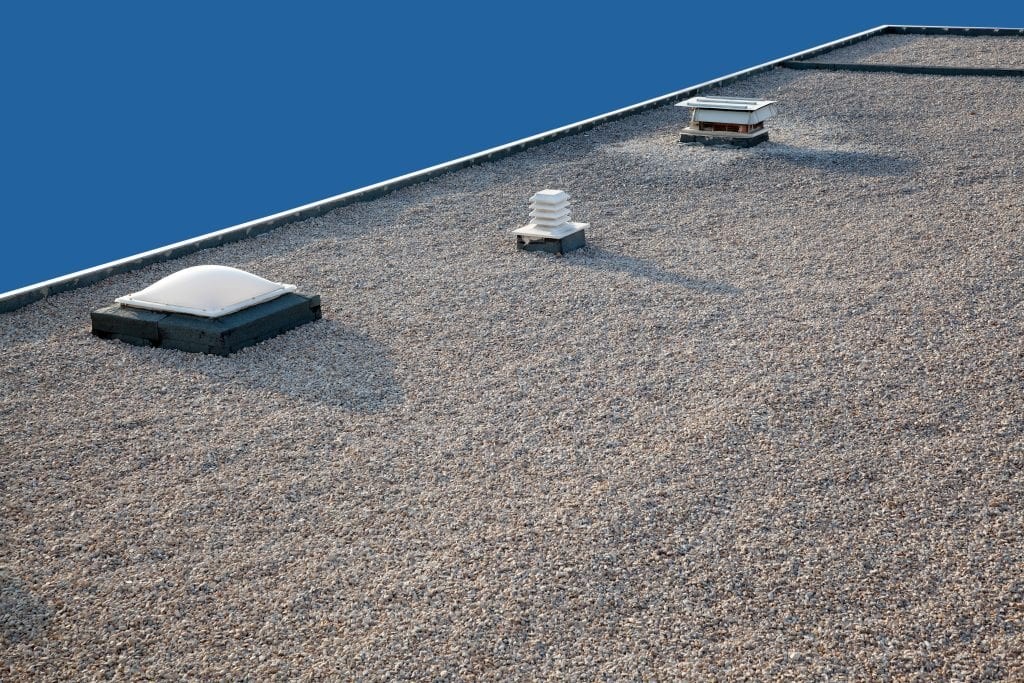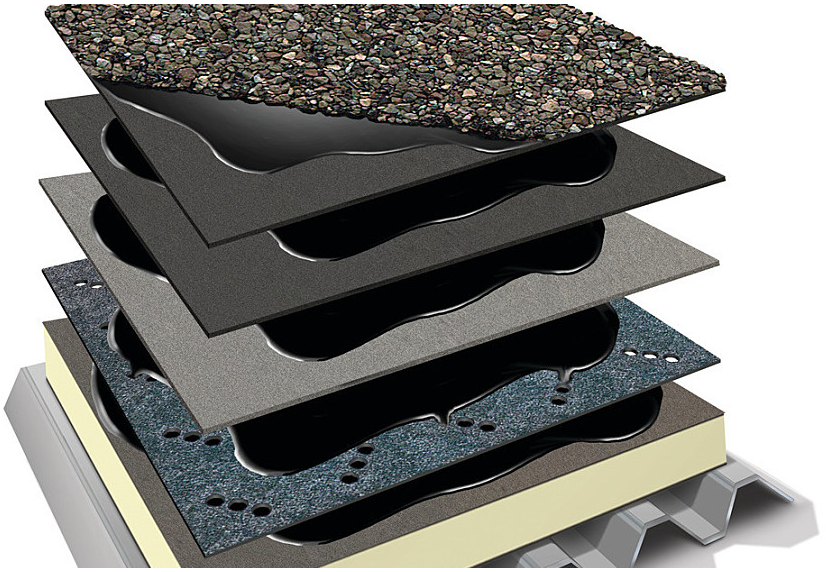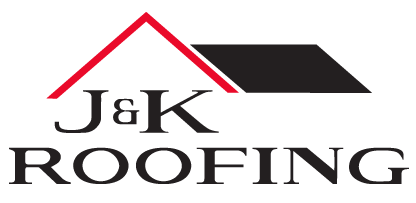
All You Need to Know About Built-Up Roofing
In many action movies, there’s a big fight scene that takes place atop a large commercial building. You see the characters running around large vents and HVAC systems, and you can hear their footsteps on gravel.
Have you ever wondered why so many commercial buildings have this same style of roof?
It’s called a built-up roof, and it’s a long-lasting, durable, and inexpensive option for flat or low-slope commercial roofs. Let’s take a closer look at a built-up roof’s components and why they’re so popular.
What Is a Built-Up Roofing System?
The built-up roofing system (BUR) has been around for a long time—more than 100 years, in fact. It’s a time-tested technology that is commonly used on commercial buildings throughout the country. The odds are good that you’ve seen one or stood on one at some point.
To put it simply, a BUR is a roof that consists of many layers of asphalt that are applied in between layers of felts or ply sheets. A common built-up roof would be stacked like this, starting with the bottom layer:
- Deck surface
- Roof insulation
- Asphalt
- Cover board
- Asphalt
- Ply sheet
- Asphalt
- Ply sheet
- More asphalt
- Ply sheet
- Reflective roof coating

If you’ve ever seen someone standing atop a roof and it looks like they’re mopping, they were likely reinforcing the top layer or completing a built-up roofing repair.
The two main types of built-up roofing are modified bitumen and ballast roofs. Modified bitumen roofs have a mix of asphalt and rubber, and have a layer of gravel on top. In ballast roofing, the lower levels do not adhere to the roof structure, but instead have a top layer of smooth river stone and larger gravel.
Benefits of Built-Up Roofing
There are many reasons why built-up roofs are so popular for commercial buildings in Colorado and beyond, and here are just some of them.
Simplicity: A BUR system is relatively straightforward in its composition, and as such, it is easy to install and maintain. They are incredibly waterproof thanks to the many layers of materials involved.
Low Cost: Depending on your roof and the materials used, your built-up roofing system might be relatively inexpensive to install.
Efficiency: The roofing materials used in a built-up roof are great insulators, which help keep your energy costs low. For example, the type of asphalt applied to the top layer of your BUR can help reflect the sun’s rays away from your roof.
Fire Resistance: Because asphalt is a primary material in a built-up roof, they are very fire-resistant.
Longevity: A built-up roof should last 30 years or more. That’s because it is made with durable materials that are easy to maintain and are able to withstand significant storms. Plus, most BUR systems come with strong warranties that tend to last around 20 years.
Traction: The combination of gravel and tar (or a mineral-surfaced cap sheet) in the top layer of a BUR makes it very slip-resistant. So if your roof gets a good amount of foot traffic, you’ll benefit from increased traction, even in wet conditions.
Appearance: Built-up roofs usually have an aesthetically pleasing look to them, thanks to the mineral or gravel used in the top sheet. This means a BUR can blend in with nearly any building or neighborhood.
Disadvantages of Built-Up Roofing
There aren’t a lot of disadvantages to having a BUR, which makes them a great option for any commercial roof in Colorado. With that said, you’ll want to be aware of the following considerations.
Leaks: While built-up roofing repair can be simple and straightforward, it’s not always easy to identify areas needing repair or where the leak started due to the many layers of material. For example, hail-affected areas can create cracks that are difficult to spot with the naked eye, which can mean water leaks and damage.
If you notice a leak in your commercial roof or you can’t remember the last time you had any work done on it, then it’s time for a commercial roof inspection.
Ponding Water: Due to the low-slope nature of BUR systems, it’s not uncommon for to occur. If the water sits around for too long—48 hours or more—it can weaken your roof and introduce leaks or other problems.
Weight: With so many layers of materials, built-up roofs can be heavy, which means that your building must be able to withstand the added pressure that comes with it. On top of that, it’s common to have HVAC systems and other essential building equipment on a commercial roof, which adds to its weight, and adds details that can fail around the HVAC systems.
Wind: Depending on the materials used in your BUR, strong winds can introduce unexpected problems. Your commercial roof may have already gone through a built-up roof pull test to make sure it can withstand the strong winds in Colorado. If not, you can have it performed to make sure your BUR will last.
Trust the Professionals
If you have a built-up roof on your commercial property—or you’re ready for a commercial roof replacement—trust an experienced roofing company in Denver like J&K Roofing.
We have nearly four decades of experience installing and maintaining residential and commercial roofs throughout the Denver Metro, Front Range, Colorado Springs, and Northern Colorado areas. Our entire team is experienced, qualified, and certified in all the materials we work with, and we prioritize quality work for your project.
Give us a call today at 303-425-7531, or complete this form and we’ll be in touch!
